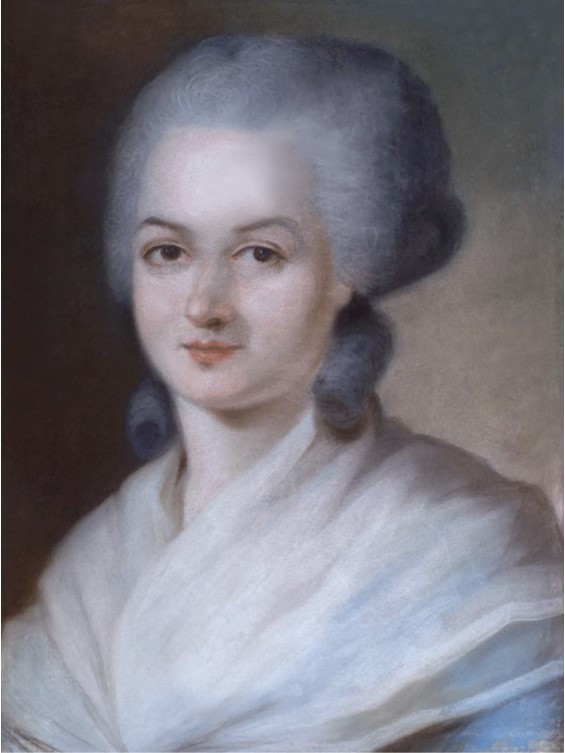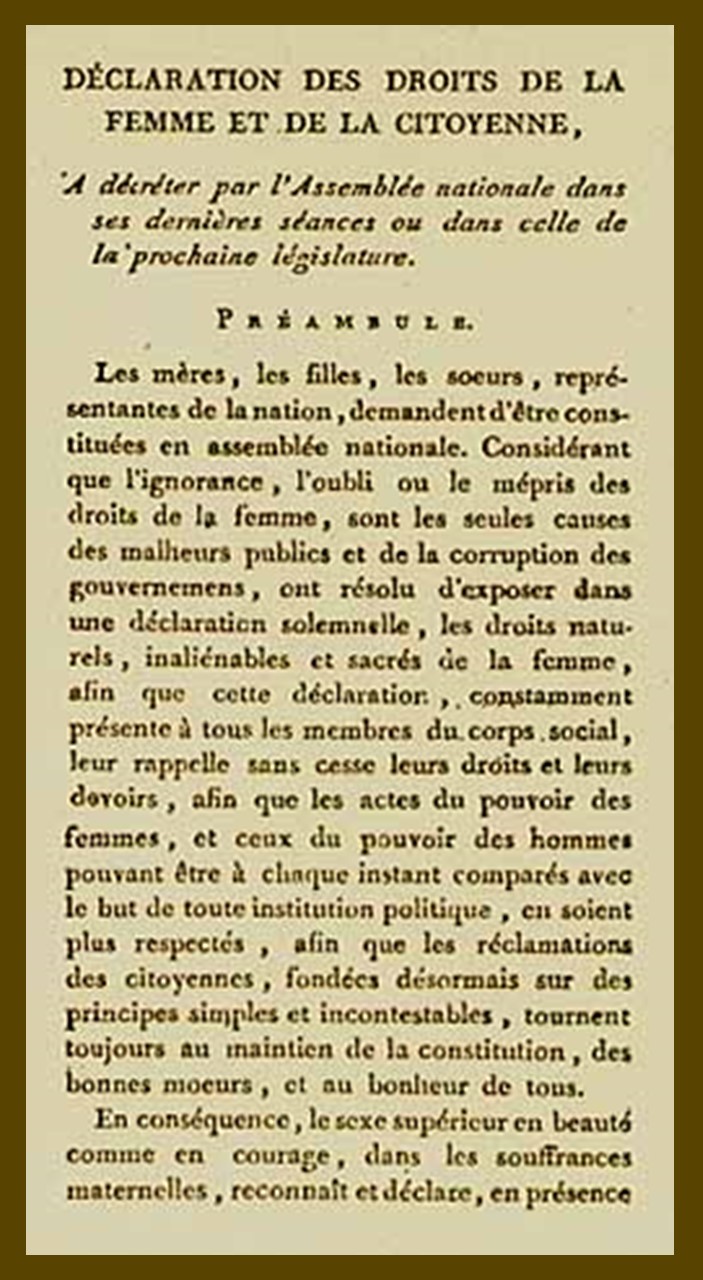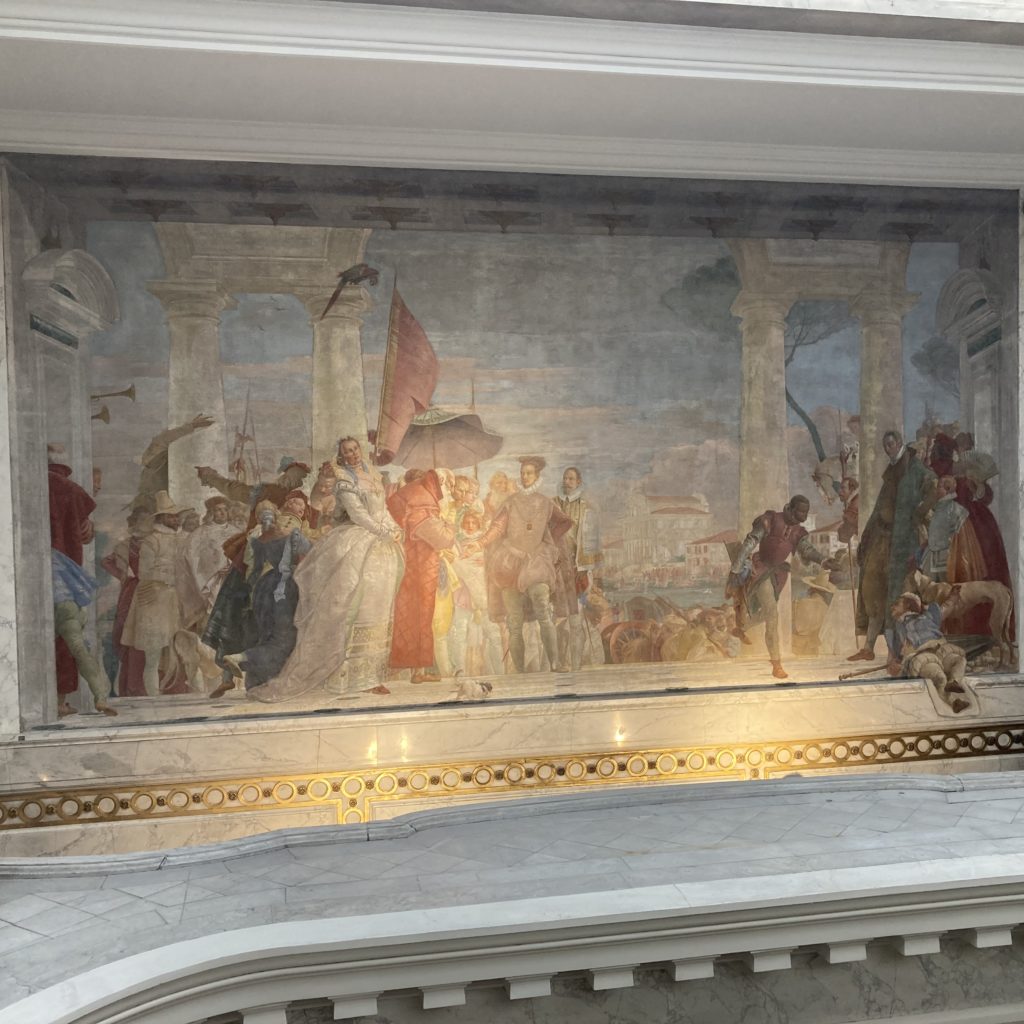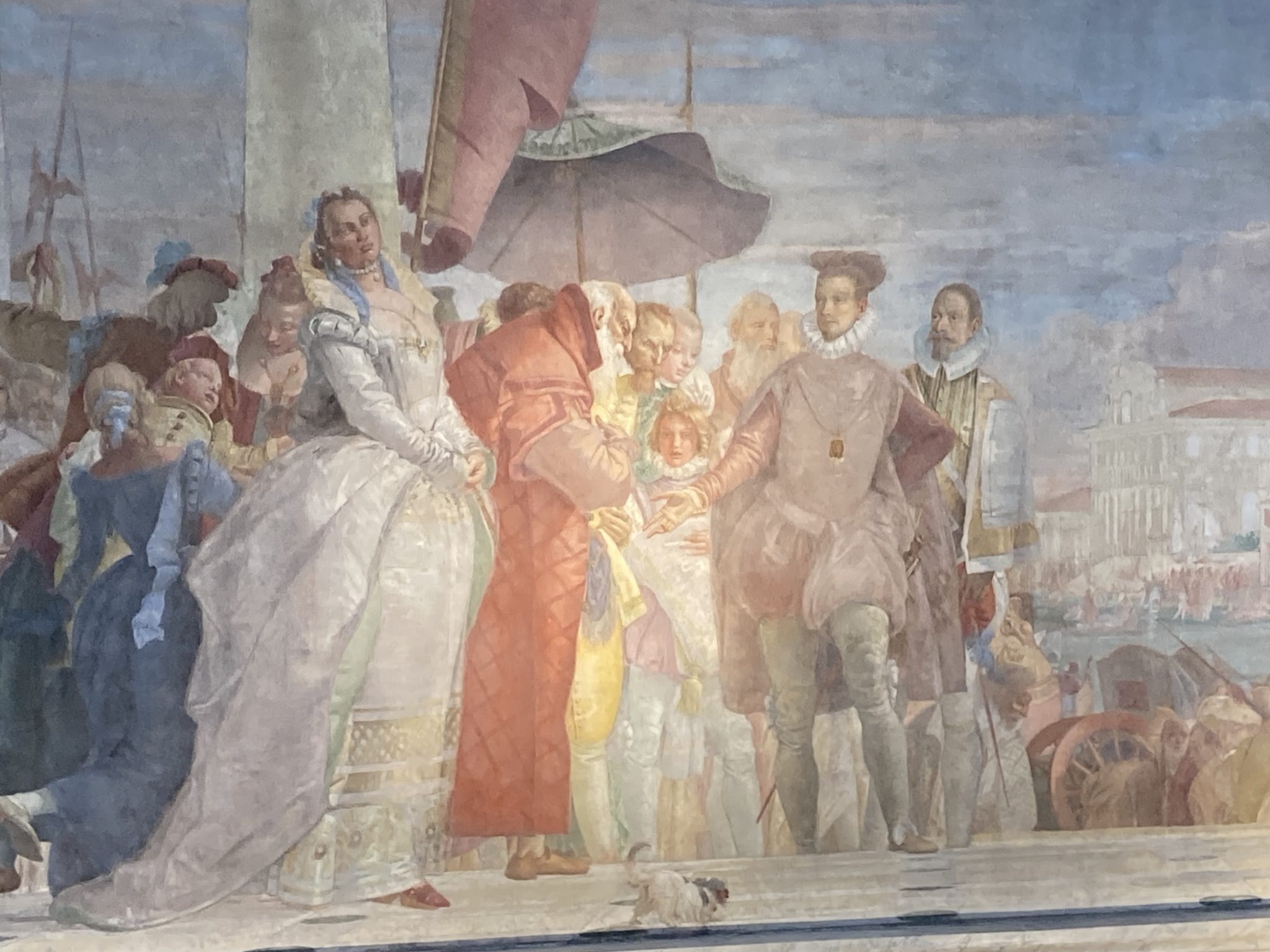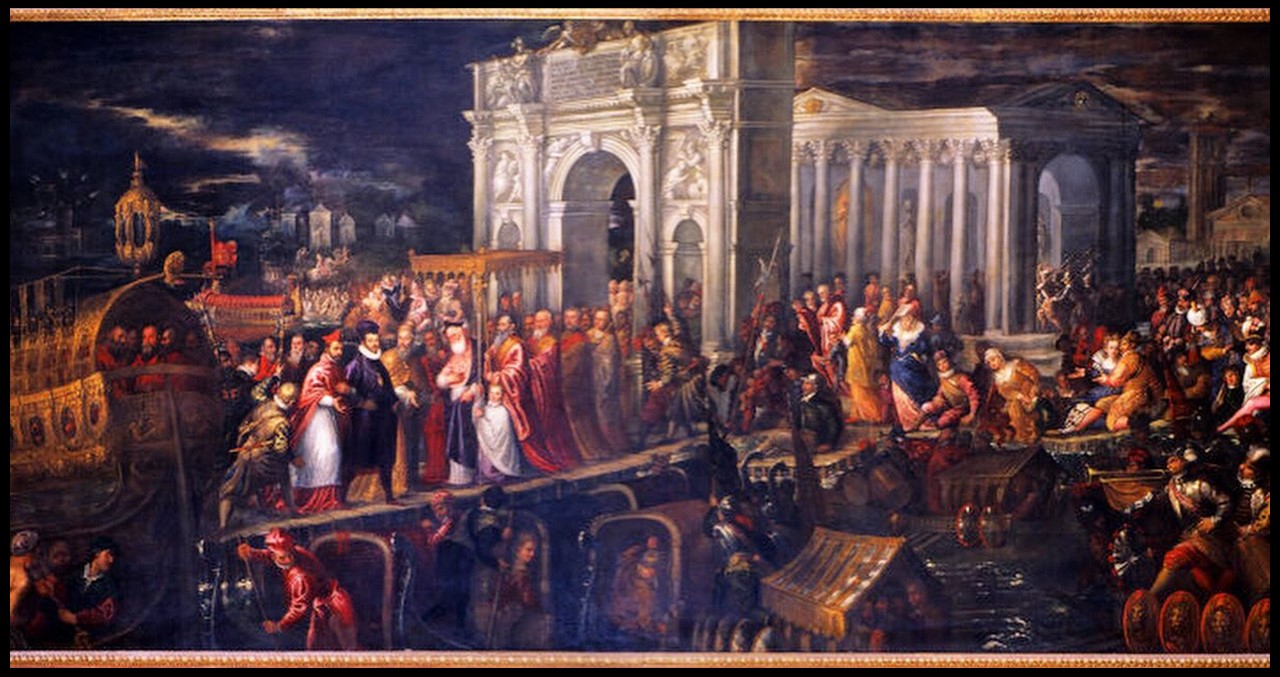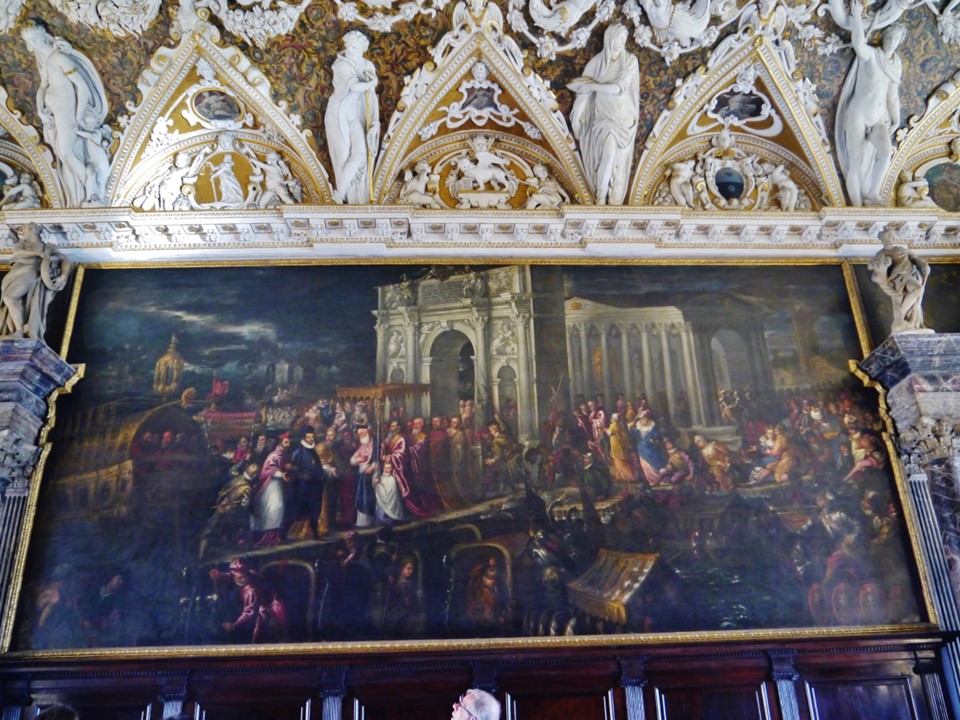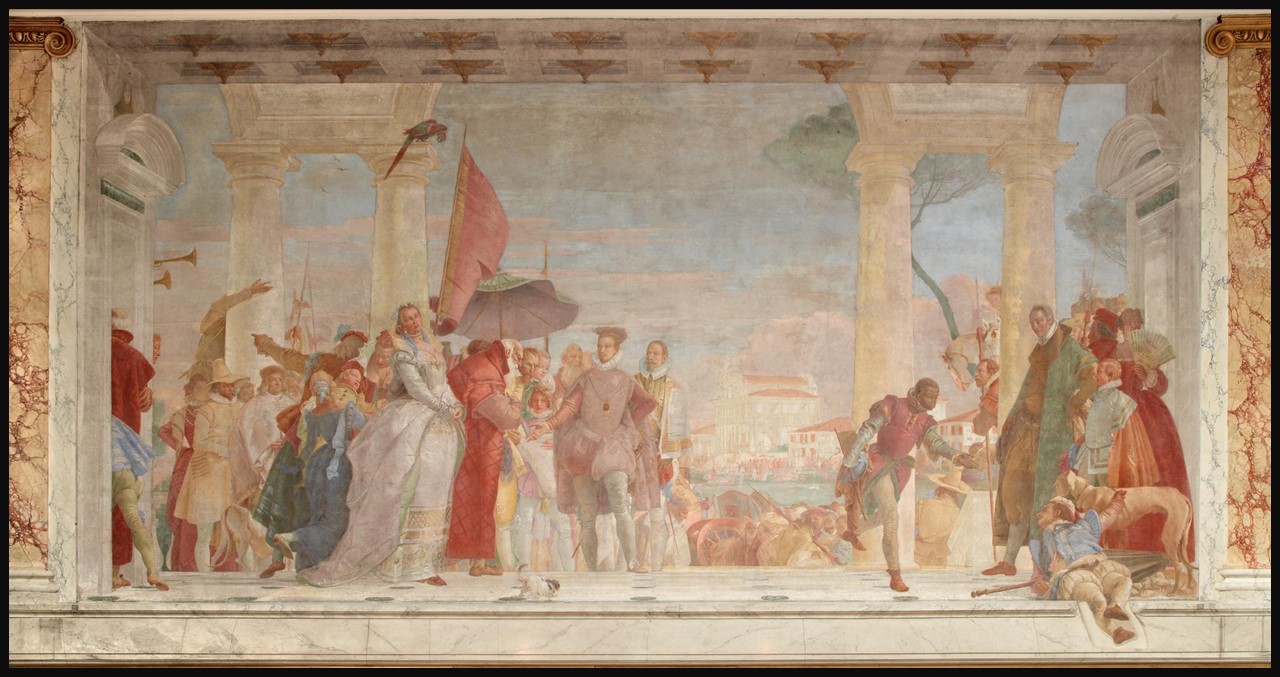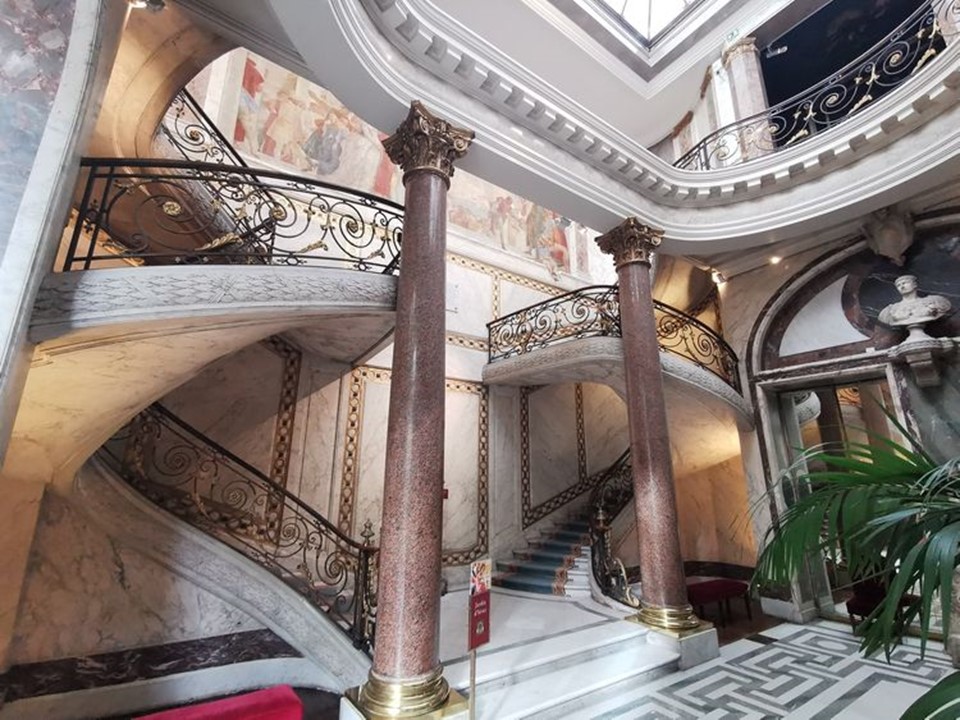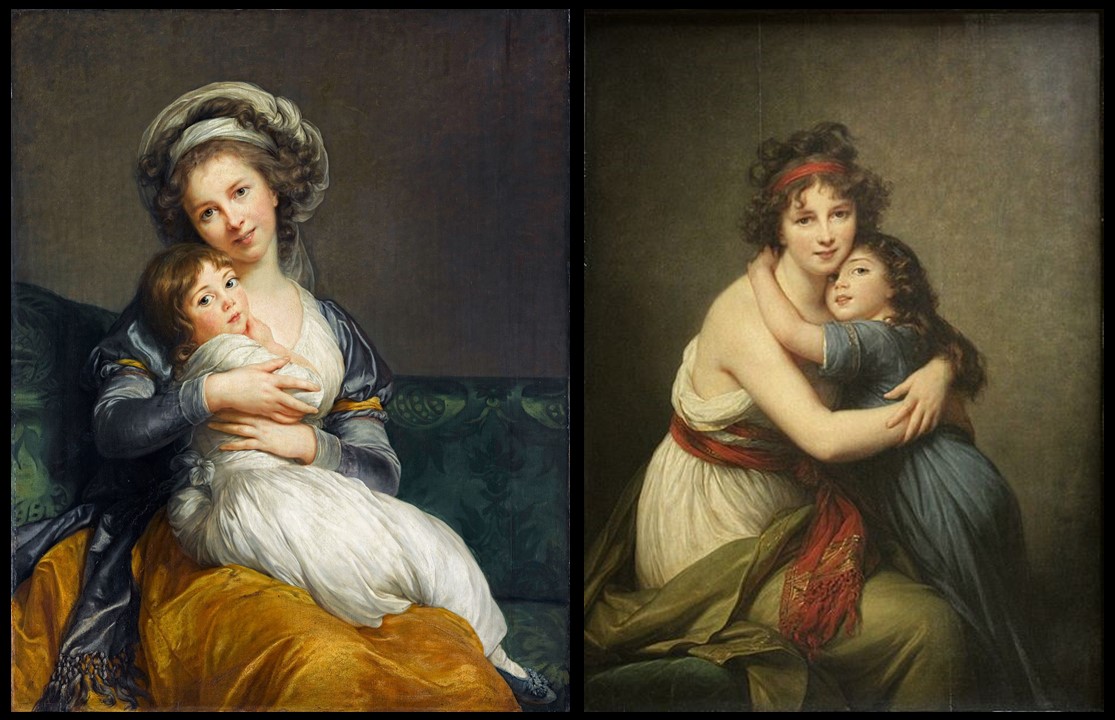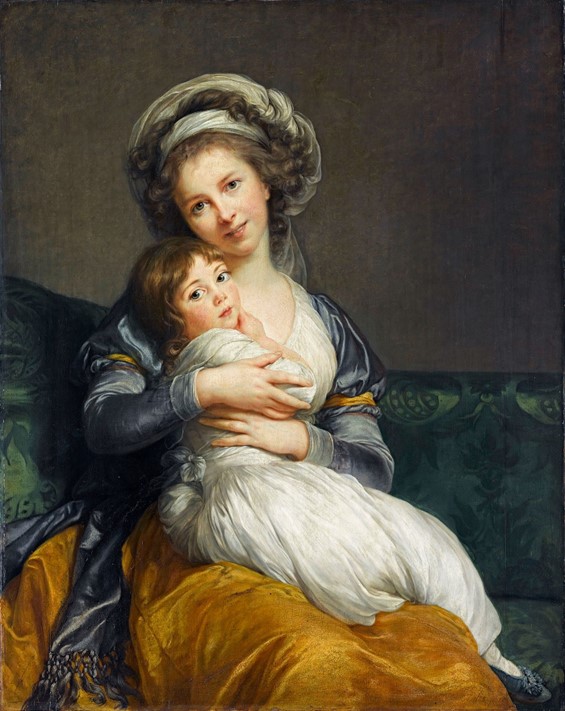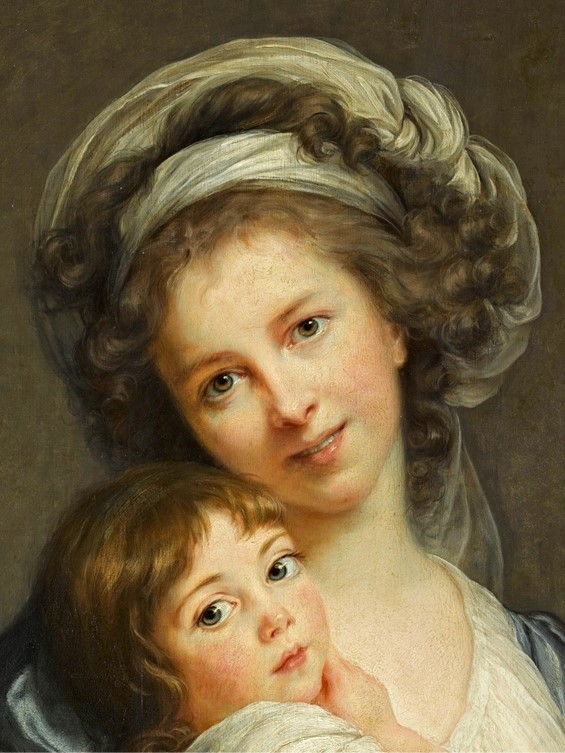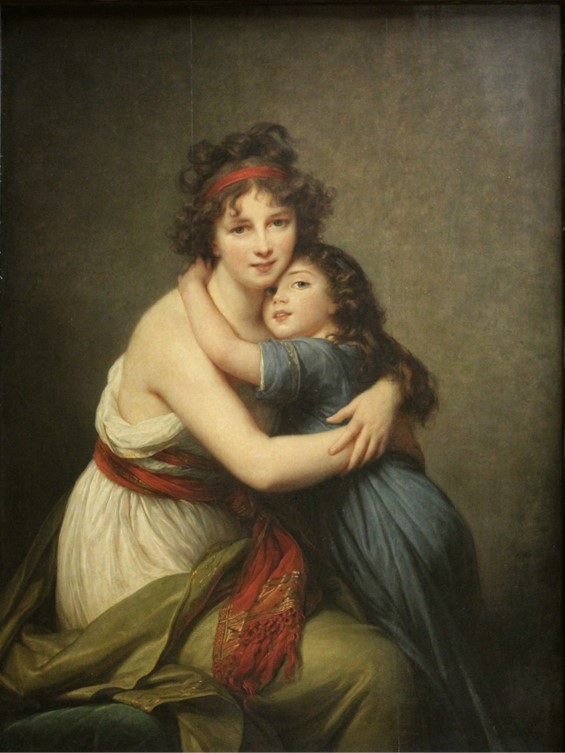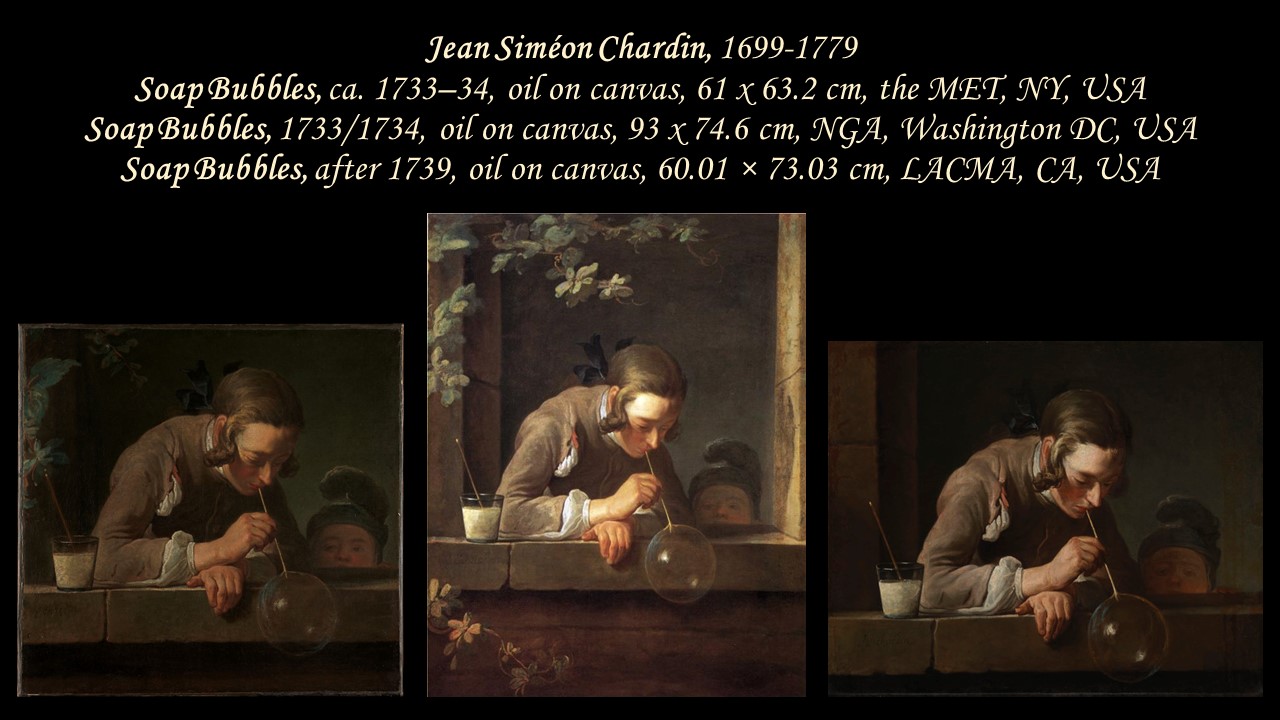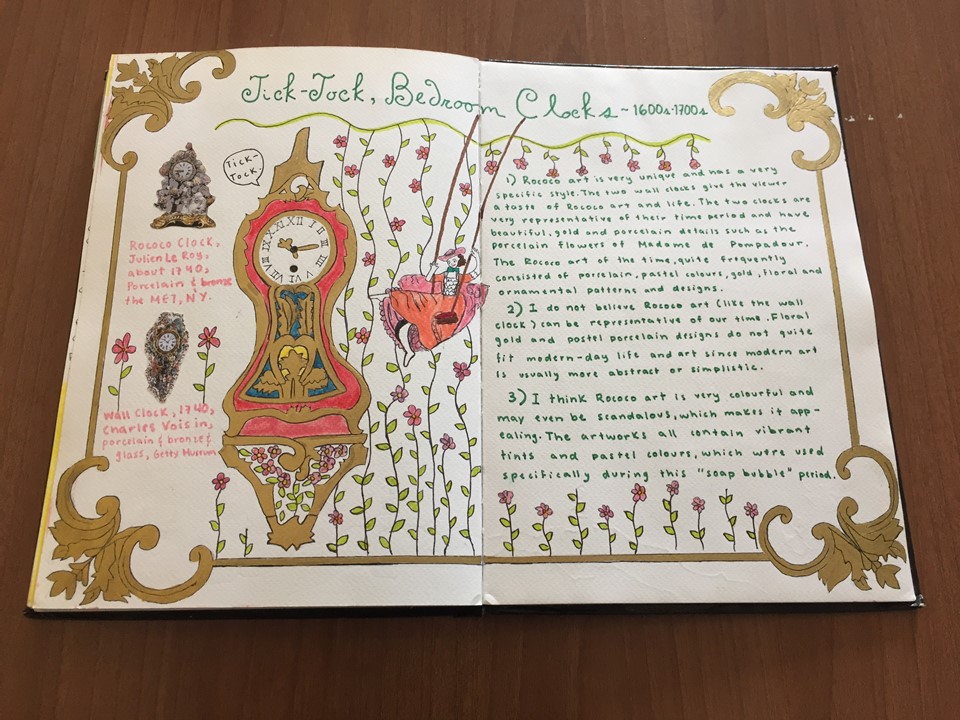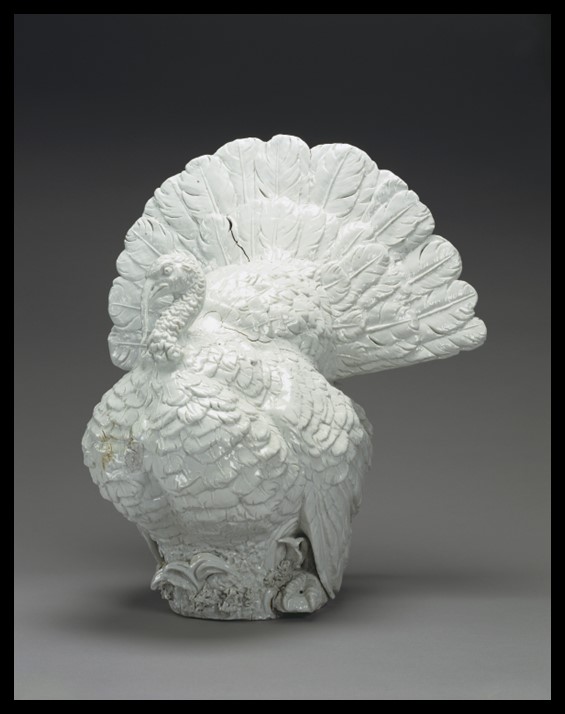
Modelled by Johann Joachim Kändler, 1706 – 1775
A Turkey, 1733, white glazed hard-paste porcelain, 53.5 × 51 × 20 cm, the Getty Museum, CA, USA
https://www.getty.edu/art/collection/object/108XV1
In Meissen’s porcelain menagerie, each bird or animal whispers tales of craftsmanship and elegance… In my latest BLOG POST titled Meissen Porcelain for Thanksgiving, I am excited to present the 1733 Meissen menagerie life-size model featuring the iconic Thanksgiving Bird!
Its head half-turned to its right, with incised eyes, an extended drooping comb suspended from the curved upper beak, the neck with deeply incised wrinkled skin, its overlapping short rounded body-feathers each with a raised central spine and incised spines covering its plump breast and back, its wings with long divided wing feathers falling to the ground and partially obscuring its three-clawed feet, the raised humped back terminating in its displayed fan-shaped tail with two tiers of radiating feathers, with a short forked tail below, supported on a circular rockwork base applied with moss and plants with short broad leaves… This is how Christie’s experts describe the 1733 life-size white model of a turkey-cock created at the Meissen porcelain factory, by master sculptor Johann Joachim Kändler. https://www.christies.com/en/lot/lot-3933086
Kändler’s Model of a Turkey was one of many animals and birds—ranging from exotic birds to fierce dogs and elephants—that were created for the foremost 18th-century collector of oriental porcelain: Augustus the Strong, elector of Saxony and king of Poland, who was also the founder of the Meissen porcelain factory. In the early 1720s, just a little over a decade since the establishment of the Meissen factory in 1710, Augustus the Strong, captivated by the beauty of porcelain, envisioned a life-size porcelain menagerie for his Japanese Palace in Dresden. He was by far the greatest collector of Chinese and Japanese porcelain, what he was missing was a breathtaking assemblage of porcelain produced by his own factory at Meissen. His dream was put into practice in 1728, and by 1735, it had become a reality.
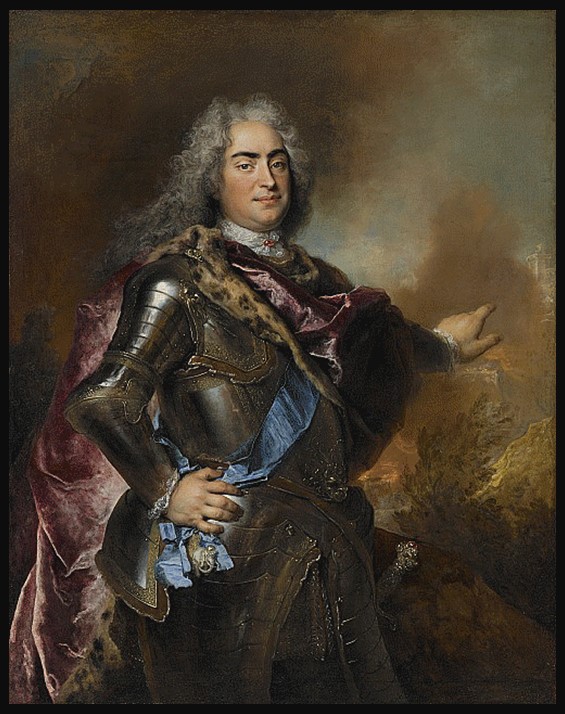
Augustus the Strong, Elector of Saxony and King of Poland, 1714–15, Oil on Canvas, The Nelson-Atkins Museum of Art, Kansas City, Missouri, USA https://art.nelson-atkins.org/objects/16759/augustus-the-strong-elector-of-saxony-and-king-of-poland
According to Christie’s experts… Two principal modellers were involved in this huge undertaking: Johann Gottlieb Kirchner and Johann Joachim Kändler. The latter became Kirchner’s successor and a major figure in the history of Meissen. Kändler’s skill was to breathe life into the models and give them a sense of dynamic movement, and his work is still very much admired by collectors. https://www.christies.com/en/stories/a-guide-to-collecting-meissen-porcelain-50def5394a5a4f6d8efaf91756720072
Johann Joachim Kändler’s importance as an artist at the Meissen porcelain factory lies in his pioneering artistry, diverse artistic contributions, innovative designs and techniques, collaborations and partnerships, royal patronage, and enduring legacy within the realm of porcelain art. Kändler was known for his exceptional ability to depict animals or birds, like the white life-size Turkey model, with a high degree of naturalism and accuracy. His menagerie models captured the essence of various creatures in a lifelike and realistic manner. This naturalistic representation showcased his mastery of form, anatomy, and attention to detail.
He is also known for his attention to detail and realism. The menagerie models he created were meticulously crafted, paying careful attention to the intricate details of each animal. From the texture of feathers and fur to the expressions on their faces, Kändler’s models displayed a remarkable level of realism, featuring dynamic and expressive poses, and capturing the animals in various states of movement or repose. These dynamic poses added vitality and energy to the models, making them visually engaging and captivating.
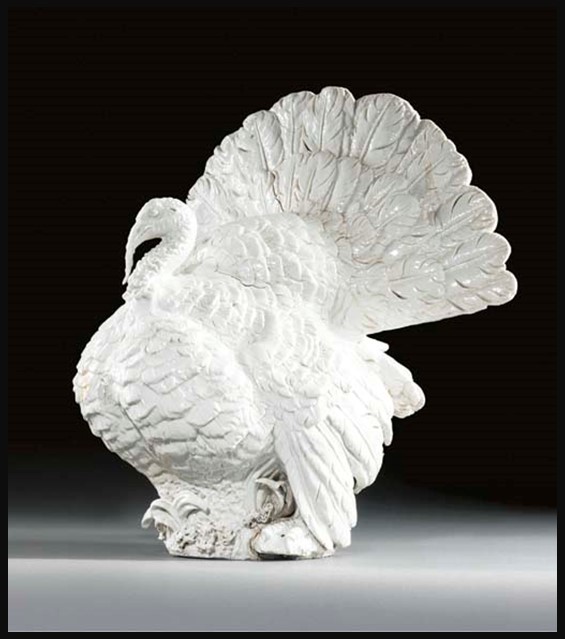
Modelled by Johann Joachim Kändler, 1706 – 1775
A Turkey, 1733, white glazed hard-paste porcelain, 53.5 × 51 × 20 cm, the Getty Museum, CA, USA https://www.christies.com/en/lot/lot-3933086
The use of porcelain as the medium for these models added to their aesthetic allure. Porcelain, with its smooth texture, translucency, and delicate nature, provided a perfect canvas for Kändler to showcase his artistic vision. The whiteness of the porcelain allowed for intricate painting and detailing, enhancing the overall aesthetic quality of the menagerie models. Kändler’s models were not only aesthetically appealing but also held cultural and historical significance. They were reflective of the 18th-century European fascination with the natural world and the desire to bring aspects of the natural world into the realm of art and decoration.
If Meissen’s animal porcelain figurines tell us stories in delicate forms… Kändler’s models of animals and birds showcase artistic brilliance and significantly contribute to the world of porcelain art.
Happy Thanksgiving Day!
Give thanks for each new morning with its light, / For rest and shelter of the night. / For health and food, / For love and friends, / For everything they goodness sends… (Ralph Waldo Emerson, 1803-1882)
Please… Check HERE! for the Meissen Porcelain for Thanksgiving PowerPoint, titled The Meissen Managerie: 10 Outstanding Examples!
A May 17, 2023 Video, titled Meissen Porcelain Animals: Getty Conversations by Smarthistory… https://www.khanacademy.org/humanities/renaissance-reformation/xa6688040:central-and-eastern-european-in-the-17th-18th-century/xa6688040:central-and-eastern-european-art-in-the-17th-18th-century/v/meissen-porcelain-animals-getty-conversations
